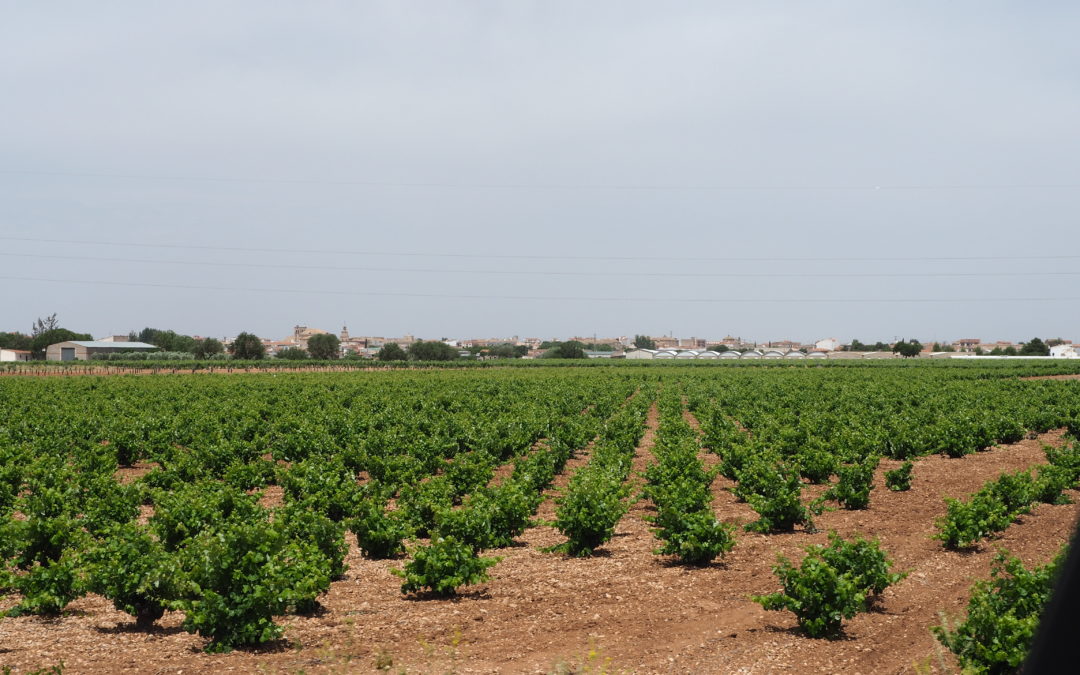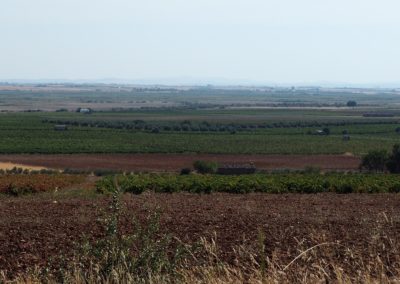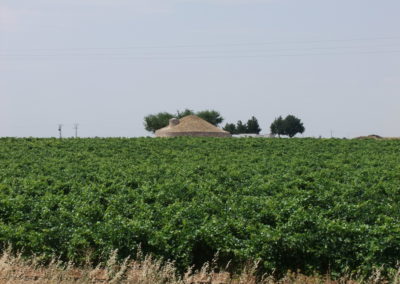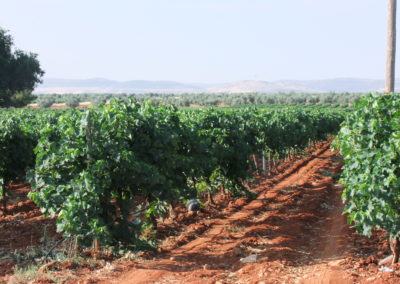The vineyards of La Mancha
DOI: 10.5281/zenodo.7607997
Inland and Coastal Plains and Countryside Model
Authors: Ángel Raúl Ruiz Pulpón and Mª Carmen Cañizares
Overview of SAMUTER
SAMUTER will analyse the interrelationships between the natural and human conditions of the territory where the vineyards of the La Mancha region of Castilla-La Mancha (Spain) are located.
1. Environmental sustainability
Vineyards, together with olive groves and cereals, are the most important crops in the Mediterranean trilogy. The environmental sustainability of the crop can be seen in two key aspects: firstly, the optimal adaptation of the vineyard to both the physical and chemical conditions of the soil and the rigours of the inland Mediterranean climate, marked by temperature and rainfall irregularities. This particularity means that there are few alternative crops in terms of profitability and adaptability on Spain’s inland plateau. Moreover, this suitability allows vines to act as a brake on desertification by providing stable vegetation cover during the summer months.
Secondly, respect for and support of certain environmental conditions is essential in the production of quality wines. These common geographical values (mainly vegetation, soil and climate) express the qualities of the terroir in which they are located, allowing us to speak of authenticity.
2. Territoriality and agri-environmental policies
Castilla-La Mancha currently has more than 440,000 hectares of vineyards, which represents almost 47% of the national surface area. Most of the vineyards are located in the central part of the region, coinciding with the geographical region of La Mancha, which has optimal environmental and social conditions for its cultivation. The territorial nature of the vineyard is based on the influence of the geographical environment on the characteristics and qualities of the final product, with a close relationship between natural cycles, know-how, tradition and landscape. The survival of this type of relationship allows the strengthening of the territorial identity of the people who live there, due to the social, economic, institutional and environmental implications associated with the crop, forming a territorial system in which different dynamics associated with a world that is increasingly globalised and dependent on market forces are at work.
3. Relations between production, processing, marketing and consumption
58% of the total production obtained and 53% of the total volume of exports are carried out in Castilla-La Mancha. These indicators show the importance of the wine sector in social and economic terms, based on the strength of a well-structured agro-industrial sector capable of organising the production, processing and marketing of must, wines and by-products. Furthermore, this region has a solid network of agricultural cooperatives which is a key factor in territorial structuring, as it supports a model of family agriculture, with a system of direct exploitation of the property, which coexists with other private organisational models that seek excellence and added value in their productions.
In general, we are talking about a sector in which social and economic innovation strategies are being implemented to help contain the uncertainty that the agricultural world is currently experiencing, trying to build a discourse of coherence and identity in the face of standardised wine production. Efforts are aimed at both the establishment of new production systems based on quality, sponsored by the regional administration, and the activation of resources linked to the cultural and heritage values of the vineyard, which undoubtedly contribute to the pluriactivity of the farms.
From the point of view of production and processing, Castilla-La Mancha has a Protected Geographical Indication covering the whole region, nine Designations of Origin (Mancha, Valdepeñas, Almansa, Uclés, Méntrida, Manchuela, Mondéjar, Ribera del Júcar and Jumilla), and twelve Single Vineyard Wines with their own Designation of Origin (Pagos Calzadilla, Campo de la Guardia, Casa del Blanco, Dehesa del Carrizal, Dominio del Valdepusa, Finca Élez, Guijoso, Pago Florentino, El Vicario, Pago de la Jaraba, los Cerrillos and Vallegarcía).
4. Good governance
The formulas for good governance revolve around two essential issues: first, the existence of a firm commitment to the promotion and development of the regional wine sector, which is reflected in the interaction between the regional government and the productive fabric. One of these examples was the modernisation of cultivation systems following the approval of the Common Market Organisations for Wine in 1999 and 2008, where the Government of Castilla-La Mancha has been adapting its rulings to favour the sector’s transition towards a more competitive production model. The most recent result has been the approval in August 2002 of the Castilla-La Mancha Law on vineyards and wine, in consensus with the social and economic actors involved in the territory.
Secondly, the efforts of participation and governance articulated in the agri-food certifications of the vineyards in Castilla-La Mancha stand out, with the Denomination of Origin “La Mancha”, with more than 155,000 members and 14,125 vine-growers, being the largest in Spain.





Recent Comments